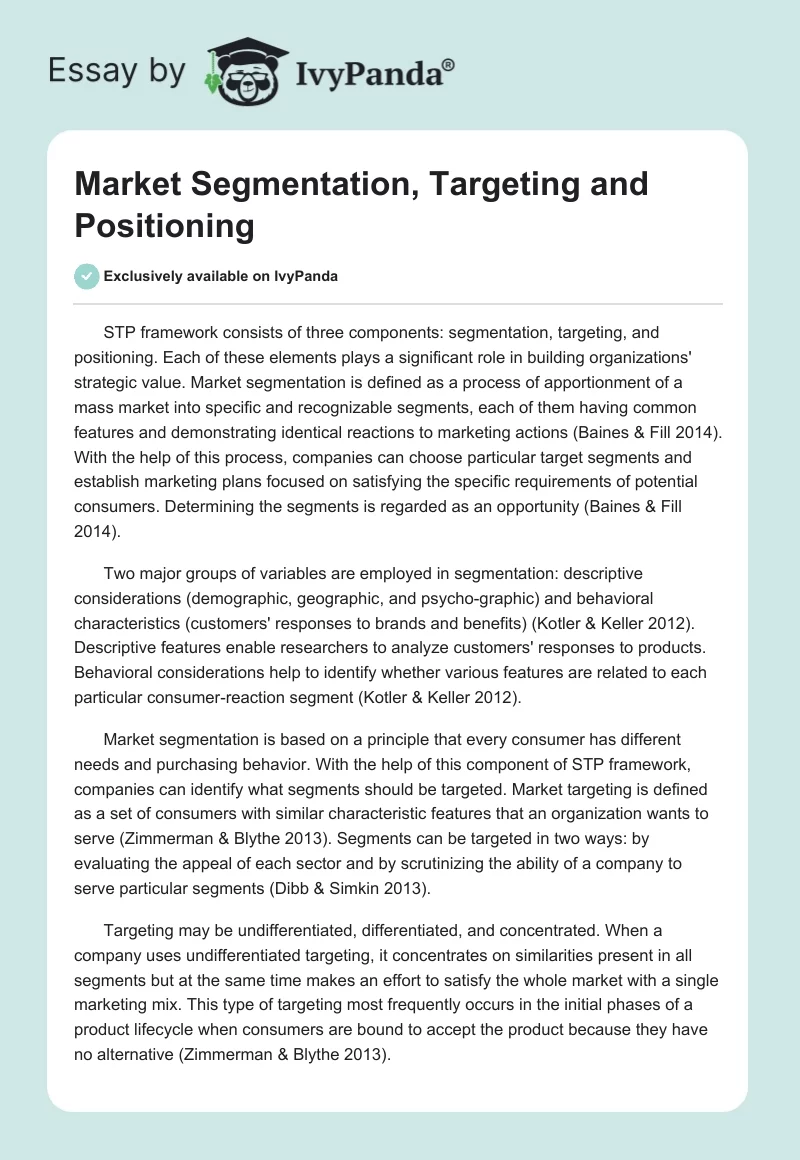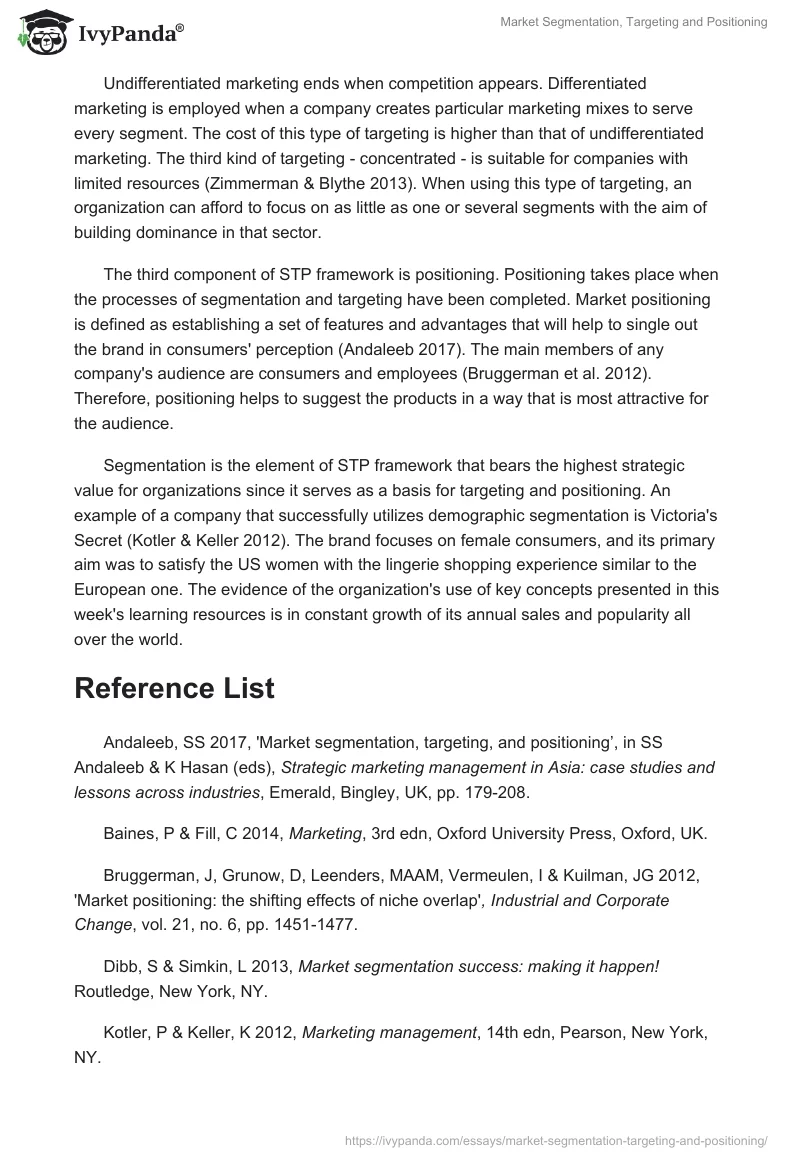STP framework consists of three components: segmentation, targeting, and positioning. Each of these elements plays a significant role in building organizations’ strategic value. Market segmentation is defined as a process of apportionment of a mass market into specific and recognizable segments, each of them having common features and demonstrating identical reactions to marketing actions (Baines & Fill 2014). With the help of this process, companies can choose particular target segments and establish marketing plans focused on satisfying the specific requirements of potential consumers. Determining the segments is regarded as an opportunity (Baines & Fill 2014).
Two major groups of variables are employed in segmentation: descriptive considerations (demographic, geographic, and psycho-graphic) and behavioral characteristics (customers’ responses to brands and benefits) (Kotler & Keller 2012). Descriptive features enable researchers to analyze customers’ responses to products. Behavioral considerations help to identify whether various features are related to each particular consumer-reaction segment (Kotler & Keller 2012).
Market segmentation is based on a principle that every consumer has different needs and purchasing behavior. With the help of this component of STP framework, companies can identify what segments should be targeted. Market targeting is defined as a set of consumers with similar characteristic features that an organization wants to serve (Zimmerman & Blythe 2013). Segments can be targeted in two ways: by evaluating the appeal of each sector and by scrutinizing the ability of a company to serve particular segments (Dibb & Simkin 2013).
Targeting may be undifferentiated, differentiated, and concentrated. When a company uses undifferentiated targeting, it concentrates on similarities present in all segments but at the same time makes an effort to satisfy the whole market with a single marketing mix. This type of targeting most frequently occurs in the initial phases of a product lifecycle when consumers are bound to accept the product because they have no alternative (Zimmerman & Blythe 2013).
Undifferentiated marketing ends when competition appears. Differentiated marketing is employed when a company creates particular marketing mixes to serve every segment. The cost of this type of targeting is higher than that of undifferentiated marketing. The third kind of targeting – concentrated – is suitable for companies with limited resources (Zimmerman & Blythe 2013). When using this type of targeting, an organization can afford to focus on as little as one or several segments with the aim of building dominance in that sector.
The third component of STP framework is positioning. Positioning takes place when the processes of segmentation and targeting have been completed. Market positioning is defined as establishing a set of features and advantages that will help to single out the brand in consumers’ perception (Andaleeb 2017). The main members of any company’s audience are consumers and employees (Bruggerman et al. 2012). Therefore, positioning helps to suggest the products in a way that is most attractive for the audience.
Segmentation is the element of STP framework that bears the highest strategic value for organizations since it serves as a basis for targeting and positioning. An example of a company that successfully utilizes demographic segmentation is Victoria’s Secret (Kotler & Keller 2012). The brand focuses on female consumers, and its primary aim was to satisfy the US women with the lingerie shopping experience similar to the European one. The evidence of the organization’s use of key concepts presented in this week’s learning resources is in constant growth of its annual sales and popularity all over the world.
Reference List
Andaleeb, SS 2017, ‘Market segmentation, targeting, and positioning’, in SS Andaleeb & K Hasan (eds), Strategic marketing management in Asia: case studies and lessons across industries, Emerald, Bingley, UK, pp. 179-208.
Baines, P & Fill, C 2014, Marketing, 3rd edn, Oxford University Press, Oxford, UK.
Bruggerman, J, Grunow, D, Leenders, MAAM, Vermeulen, I & Kuilman, JG 2012, ‘Market positioning: the shifting effects of niche overlap’, Industrial and Corporate Change, vol. 21, no. 6, pp. 1451-1477.
Dibb, S & Simkin, L 2013, Market segmentation success: making it happen! Routledge, New York, NY.
Kotler, P & Keller, K 2012, Marketing management, 14th edn, Pearson, New York, NY.
Zimmerman, A & Blythe, J 2013, Business to business marketing management: a global perspective, 2nd edn, Routledge, New York, NY.


